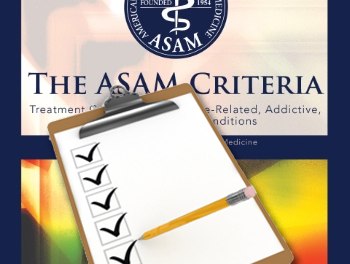Parity laws and Affordable Care Act implementation mean that more insurance plans are covering inpatient addiction treatment, and most managed care organizations make use of a review process that includes the need to justify additional inpatient days. An initial stay of “X” days is approved when the client is first admitted. But if they need more, program staff need to make the case to a reviewer. In some cases, the insurer will share their criteria with you. Even then, the review process can be something of a challenge for those unfamiliar with it.
I should note that there’s no single correct way to conduct all review calls– the process varies among payers. But here are some rules of thumb that we’ve found helpful to clinicians when making such calls for inpatient providers:
- Know the case in advance. Reviewers will ordinarily ask fairly specific questions and it’s smart to have the answers at hand. That means having read the interpretive summary and reviewed the treatment plan to make sure you can respond quickly when asked.
- Be prepared to discuss the principal barriers to outpatient success. Presumably you’re asking for additional days because there are clear reasons for thinking the patient isn’t ready to succeed at a lesser level of care. Fair enough. But be sure you can state these barriers clearly and succinctly, so the reviewer quickly gets a handle on the obstacles to be overcome.
- Have specific interventions in mind. How exactly does your treatment team plan to make use of the requested days to increase the chances of successful transition to outpatient? Specificity helps. Here are ten common objectives, and of course there are many more that may apply in particular cases:
- Meet with the family or concerned persons to engage them more fully in the recovery process.
- Introduce some new treatment (acupuncture, EMDR, a medication, etc) that takes a while to have effect.
- Teach some new skills (impulse control, craving management, etc) to make the transition to OP successful.
- Address a pattern of relapse triggers that have contributed to past relapses. Help the patient develop a plan to cope with those triggers in future.
- Develop a contingency contract* to set up the post-discharge environment to prevent relapse.
- Increase the patient’s motivation and advance the stage of change towards Action.
- Address a co-disorder, mental health or medical, so as to improve chances of success after discharge.
- Help the patient find a sponsor and home group and develop stronger links to self-help fellowships in the community.
- Find a stable living situation where the patient is less likely to relapse in outpatient.
- Get the patient to agree to a transitional living residence or halfway house.
Your goal is always to use the extra time to measurably increase the chances of a good outcome for that patient. Never changes. The questions are about how.
A Sample Case
Franco is 29, a cocaine and alcohol addict with a ten year history of substance use and two previous outpatient treatments, the last more than a year ago. Franco lives alone in an apartment and works part-time at a brokerage company. Since his employer cut back on his hours six months ago, he has run up about $8000 in credit card debt which is now a source of concern as he owes back alimony to his former wife. He arrived in treatment seven days ago and although initially resistant, Franco has become more motivated as the days pass, and now says he wants to quit drugs and alcohol permanently. He has tried 12 Step groups in the past without success, and before admission was attending a SMART Recovery meeting in his home area, while continuing to drink and use. He says he now feels better physically and is less depressed than he has in months, but still has occasional strong cravings, for cocaine in particular.
Franco’s initially-approved time is up, and the managed care reviewer suggests transitioning him to an Intensive Outpatient Program (IOP.) Staff have have several concerns, particularly around his previous relapses. They noted that he had problems managing his cravings, poor recovery support, and a definite ‘relapse trigger’ in the conflict with his ex-wife. His counselor put together this “case” for his continuing stay:
Good news: Franco is definitely more motivated, and his depression has lifted. He’s ready for some serious work, and here’s our plan:
Build craving management skills: Using acupuncture and self-hypnosis. We’ve already started these and hope to convince him of the importance of continuing them after discharge.
Get a working recovery support system: In the past, he’s participated but not engaged in 12 Step groups – in other words, he attended meetings but had no sponsor, and also continued using. We’d like to develop a contingency contract* where he commits in writing to attend meetings and have regular contact with a sponsor at the group of his choice. The ‘contingency’ would be his agreement to go to a transitional facility if he doesn’t live up to it.
Address the family conflict relapse trigger: The debt/alimony situation is a set-up for relapse. We’d like to bring the ex-wife in for a conjoint session aimed at coming to a resolution that doesn’t trigger another use episode.
Without the above steps, our clinical team puts the chance of another failure in outpatient at better than 50%. We think these objectives can significantly reduce that risk, preventing another treatment failure.
Note that the ‘case’ made by the clinician focuses on three key elements:
- The progress the client has already made
- The remaining barriers to success
- What specific achievements can be made with additional days
While (as we noted above) each managed care company may have its own criteria- and of course you should tailor your case to the particular requirements if you know them, these three elements can help you construct a powerful, coherent argument for additional inpatient treatment time. Inevitably you’ll get some refusals. So be it. Do a quick review of what if anything you might have done differently. Think like a batter after a strikeout: there’s another at-bat coming. Move on.
*Contingency contracting as a tool in substance abuse treatment- we’ll do a more detailed article on this in the future, but for now think of it as seven steps:
- Identify target behaviors to change. Be reasonably specific (ex. ‘take psych meds’ or ‘attend at least 3 meetings a week’) and give the client some input.
- Identify rewards the client will get for completing the contract (ex. privileges, living at home, etc.).
- Identify potential consequences the client agrees will ensue if the contract isn’t completed (ex. ‘will go to halfway house’ ‘lose privileges’ etc.)
- Identify monitoring process for compliance (clean UAs, attendance records, etc.)
- Negotiate any other provisions unique to this situation.
- Address the client’s and/or family’s questions or concerns, ensure everyone understands.
- Sign & date the contract with a witness.














Despite being an old-timer expert in behavioral health/cd UR, this was the best rationale yet. Have you noticed even Aetna is now grilling us when it is time to step-down to IOP level!!!
Soon ,we will have to justify our raison d’etre <that word which means reason for living!! great stuff